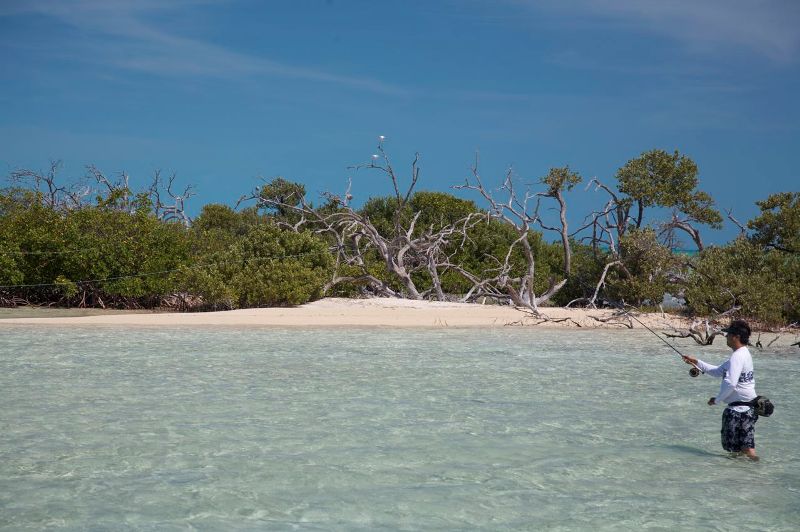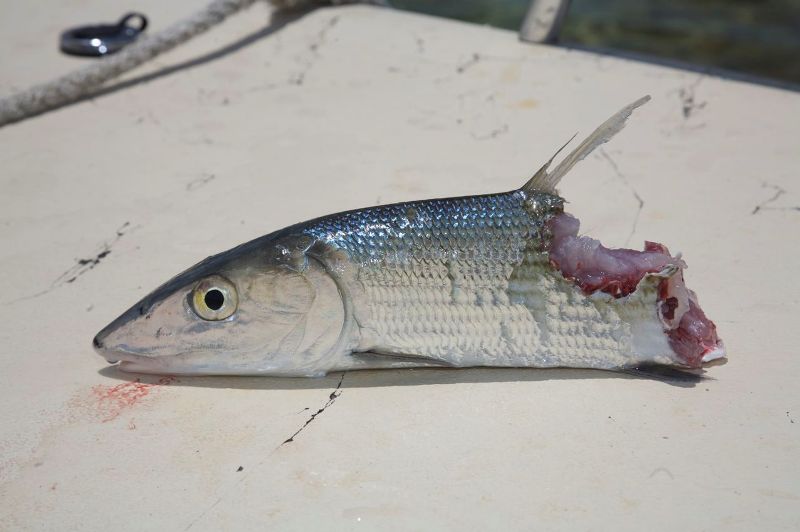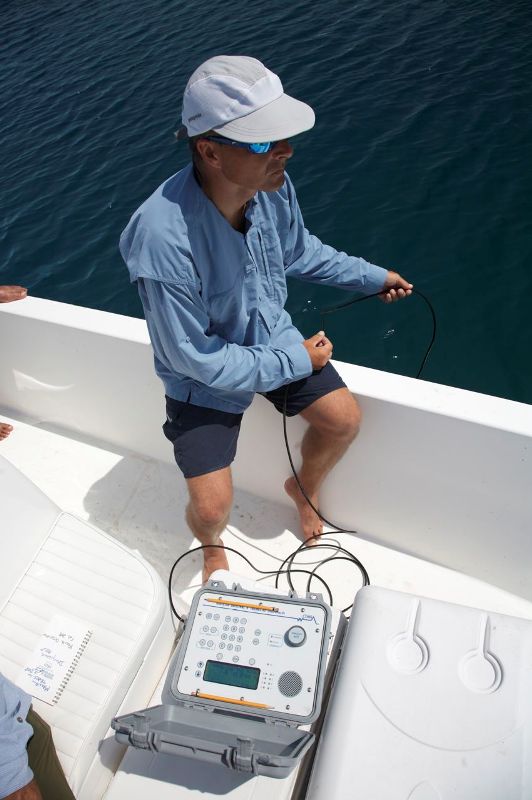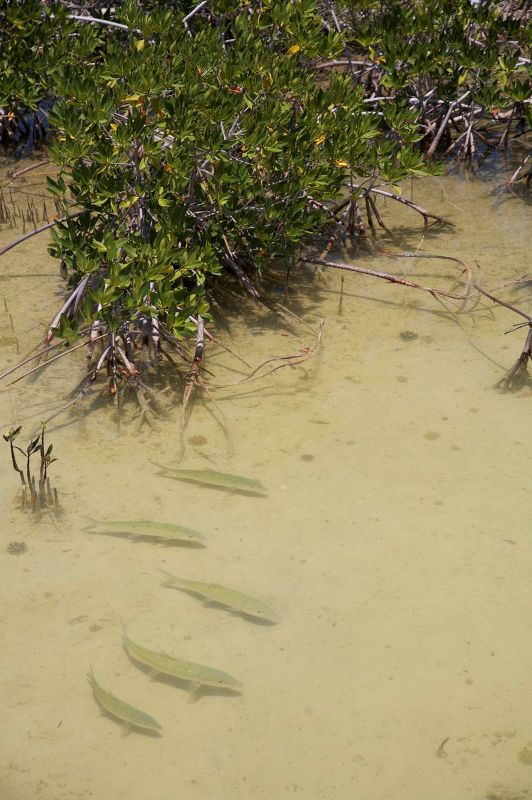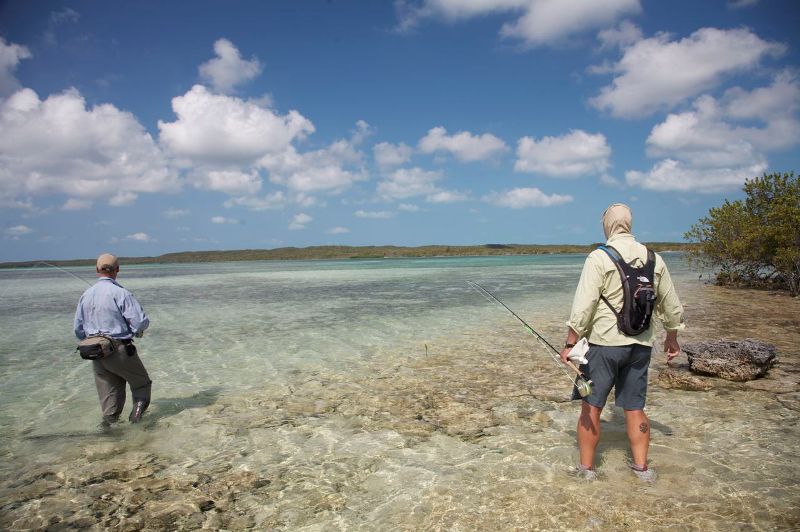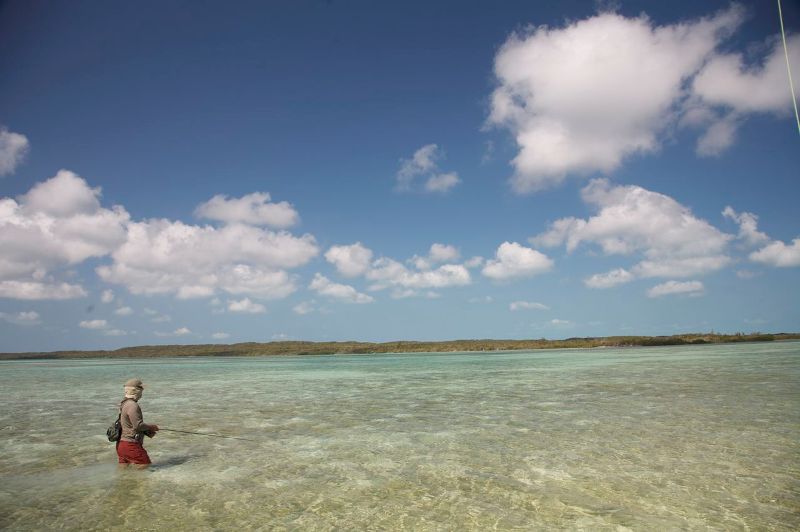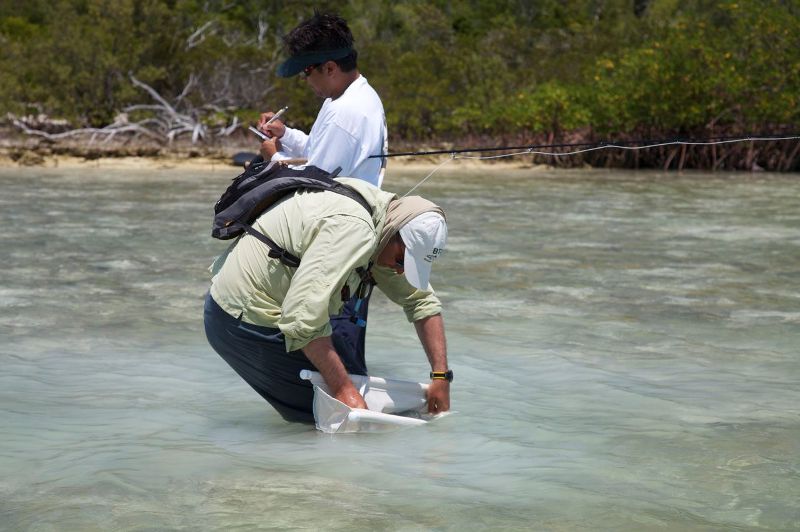Core Angling: Science and Fly Fishing Combined
[Update: Added a bunch of photos after the jump.] Patagonia Fly Fishing Marketer, Bill Klyn, shares his experience with a new kind of fly fishing trip. Core Angling offers world-class bonefishing in the Bahamas combined with the opportunity to help scientists study the fish and hopefully preserve their numbers for good. If you’re an angler, or you know one, be sure and check out the fish-landing tips at the end of his story.
Bonefishing: Just the word elicits that memory of blistering sun, wading sand and marl flats of soothingly warm calf-high water, that smell of primordial ooze, while constantly searching for that tailing fish, nervous water or that dark shape that suddenly appears – usually at the last minute before spooking. That memorable cast that gently lays the fly close enough to see that exciting, accelerated grab, then the sound of the screaming reel during that zip code changing run that elevates both the heart rate and one’s soul. What can be better than that?
Having run into Bonefish Tarpon Unlimited’s Director Aaron Adams at theSomerset Fly Fishing Show, he introduced me to Dave Petersonrepresenting a group called Core Angling. This new take on bonefishingallows anglers to join scientists with the challenging job of catchingfish that become live “samples” for research to help fill thesignificant gap in knowledge of bonefish spawning, predation andhabitat. With this taking place in the remote location of Eleuthera,Bahamas, my only question was, "Where do I sign up?"
Gathering a group of reps from Patagonia – Mike Thompson, Mark Harbaughand Jason Lozano – we arrived in Eleuthera to be met by Dave Petersonand the Director of Cape Eleuthera Institute, Andy Danylchuk. As it turnsout, Andy is the Lefty Kreh, the Babe Ruth of bonefish scientists inthe Bahamas.
Feeling like seven-year-olds, wading the flats took on a newperspective of wonder and learning experience, even though it wassomething our group had been involved in for many years. Andy and Dave,like the patient fathers, readily fielded every question from ourthought-to-be-knowledgeable group. But when that first fish was caughtand out came the research equipment, our interest took a fundamentalshift from angling to research.
The process of studying recovery rates of fish was such: aftermeasurements and fin clips were taken, a freshwater hook with mono lineand bobber was attached to the dorsal fin. The freshwater hook wouldrust-out rapidly if we could not retrieve the bobber. We could watchthat bobber for 20 minutes until the fish was totally recovered, orshorter if shark or barracuda had the fish for lunch. What flyfisherman had ever been interested in watching a bobber, unlessattached to a dead-drifting nymph, for 20 straight minutes? Well,watching that bobber as it would head back with the school or beat finsto deeper water, became a mesmerizing experience. Realizing the averagetime an angler spent taking “a hero shot” – just a minute – therecovery rates plunged, primarily to predation. Conversely, the lesstime out of water, there was a higher percentage of recovery.
The other study we did was to place a fish in a live well for 20minutes and the researcher would test the water every five minutes todetermine the chemical secretions of the fish. This helpedto determine what secreted chemicals excited the predators to targetthe fish.
Finally, we were going to known areas that fish with transmitters werefrequenting. Dropping a portable receiver over the side of the boat tolisten for any “pinging,” we were able to catch up with Andy on whatthe research was providing.
Heading to the Eleuthera Institute and seeing the many tanks andtesting facilities on bonefish and sharks, speaking to otherscientists, and hearing of impending studies for the future, instilledan even greater interest to come back once again for the next round ofresearch.
Did I mention that the waters just off the Institute dropped to 1,000feet a few miles from the harbor? And that dorado, sailfish, sharks andother offshore species can easily be reached in a very shot run?
We found a way that was better than just fishing. Whether you’re aseasoned bonefish junkie or new salt water angler, I highly recommendtaking a trip with the Core Angling folks to enhance your experience.Create a new memory and support further research by joining CoreAngling (866-207-1891) and the Cape Eleuthera Institute. Or if you want to dosomething now to support saltwater flats research, check out Bonefish Tarpon Unlimited and the terrific workthey are doing.
Tips from our collective experience:
- Release a fish in the water.
- If the fish is still fighting with you, hold them upside down and they will stop for quick removal of the hook.
- If you have to take a picture of a fish, have everything ready –camera, glasses off, etc. Then wet your hands, pick up the fish and take thepicture in seconds (run around until you are exhausted, hold your breath, then figure out how long that is for you).
- Do not use a lip-gripping device on a bonefish as their soft mouth and jaws have a great deal of trouble handling that much pressure.
- Plan a trip with consideration of the new moon. This is when fish “disappear” in large numbers to spawn.
Jason Lozano takes bonefish research seriously. All photos by Bill Klyn
Holding fish out of water results in lunch for sharks.
Andy Danylchuk dropping his portable receiver listening for "pings" from transmitter-tagged bonefish.
Objects of our research – they saw us coming, but made for a good picture.
Who said scientists wear lab coats? Dave Petersen of Core Angling geared up, net and tools at the ready in his "lab."
Mike Thompson searching for research samples.
Core Angling’s Dave Petersen and Patagonia rep Jason Lozano measuring bonefish, doing a fin-clip and readying the "bobber" attachment to watch recovery rates.
For more fly fishing stories and links to some great resources and blogs, including Moldy Chum and Way Upstream, check out the Fly Fishing section of Patagonia.com.

